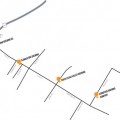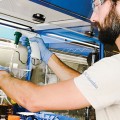A few years ago, in our 2015 Silicon Valley Beer Week issue, I declared that the craft beer scene had jumped the shark and reached peak IPA. At the time I was so over the heavy, ultra-hoppy and highly alcoholic style of brew known as India pale ale.
It seemed to me that craft brewers were leaning way too hard on hops—the bitter, pine cone-shaped flower that is added to beer in order to balance out the sweetness of the grain. IPAs in particular are known for having a high hop content, which contributes to their above average scores on the IBU (international bittering units) scale.
Back in 2015, it felt like just about every artisan beer maker was dialing up bitterness, and I longed for a simpler, lighter, smoother brew. I got into California Lager by Anchor Brewing and the Nooner pilsner by Sierra Nevada. Along the way, I found others who shared my aversion to acrid ales.
“The over-hopping of India pale ales is really just an American thing of ‘bigger is better,’” Dustin Cawthorne, manager of Jane’s Beer Store in Mountain View, told me three years ago, noting that many smaller brewers were working on craft pilsners and lagers in response to the glut of IPAs.
Since 2015, the industry has evolved—and so has my thinking. I’m back on the IPA bandwagon, but not because I’ve discovered a newfound love of over-hopped brew. I give all the credit to the hazy IPA.
You may know it as a Northeast-style IPA, a New England IPA, a juicy IPA or a tropical IPA. They’re cloudy, less bitter and often possess fruity overtones, and it seems like every craft brewery has a their own take on the hazy.
Over at Camino Brewing, one of the newest local brewers to open a taproom in downtown San Jose, they have the Northeast by S. 1st. It comes out of the tap a cloudy golden amber, giving off an orange effervescence. However, unlike other orange-tinged brews—like the wheaty German-style hefeweizen—Camino’s hazy is balanced by a palpable punch of hoppy tang.
Elliot Hoffman, a brewer and manager at Camino, explains the science behind the Northeast by S. 1st, and other hazy, tropical, juicy or Northeast-style IPAs.
“For a really long time brewers have been trying to minimize the haze in their beer,” he says. Much of the cloudy material you see in this type of brew is yeast that has not flocculated, or clumped together and dropped out of the solution. In a Northeast-style IPA, brewers intentionally work to keep much of that yeast in the final product.
Northeast-style IPAs get their name from the region in which they originated—New England—Hoffman explains, noting that brewers in this region began to favor low-flocculating strains of yeast while simultaneously using higher-protein malts, which works to trap the yeast in. “We make a maze that’s hard for the yeast to get out,” Hoffman says.
Interestingly, many of the types of hops deployed in Northeast-style IPA are grown in the Pacific Northwest, in a region known as the Yakima Valley. These hop varietals—such as Citra, Simcoe and El Dorado—are known for their fruit-forward qualities.
As it happens, low-flocculating yeast tend to produce esters—or aromatic qualities—reminiscent of stone fruits. These esters pair well with the fruit-forward hops.
Combine all of these factors together—the trapped yeast and their juicy esters, the fruit-forward hops and the protein-packed malts—and you get a beer that zings the taste buds without overpowering them. These beers have a hint of fruit that tastes natural, unlike the in-your-face overtones of a beer like Pyramid’s Apricot Ale.
And, thanks to the higher protein content, they have a softer mouth feel than many other IPAs. Camino’s Northeast by S. 1st scores a 41 on the IBU scale. Compare that to Lagunitas IPA’s 51.5, Sierra Nevada Torpedo Extra IPA’s 65 or Ballast Point Grapefruit Sculpin’s 70.
But look at me. I’ve gone full beer nerd on you. Long story short, all of this is to say that the summer’s beer du jour is complex yet easy to appreciate, higher in alcohol content than your average, domestic corn beer—without an overly hoppy, uber-bitter bite—and, overall, immensely drinkable (erm… sessionable, I mean).
Perhaps that’s all Cawthorne was searching for all along. “I hope that more brewers will scale back the hops and focus on extracting as much flavor from the hops as possible,” he told me back in 2015. It would seem his hoppy hopes have been realized.
Other Silicon Valley Beer Week Stories:
Downtown San Jose’s Taproom Trail
Smoothing Out the Hops: Hazy IPAs Takeover
The Can Van: Mobile Canning for Craft Beer
The Yeast Bay Conjures Original Cultures for Craft Brewers
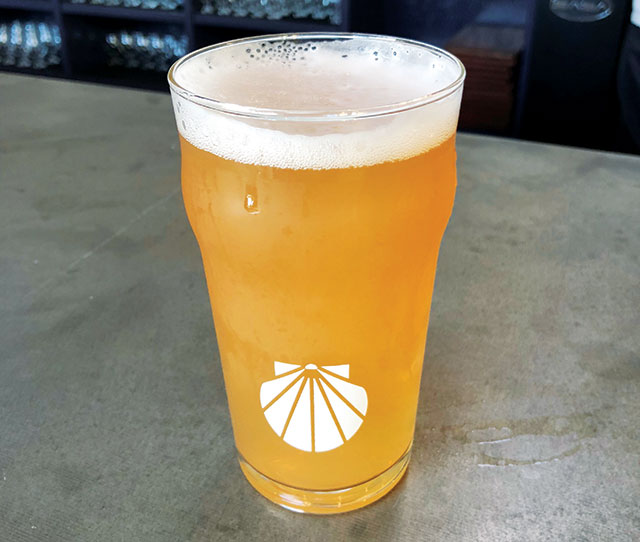
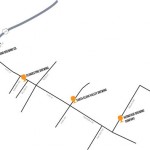 Downtown San Jose's Taproom Trail
Downtown San Jose's Taproom Trail 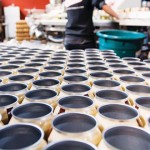 The Can Van: Mobile Canning for Craft Beer
The Can Van: Mobile Canning for Craft Beer 